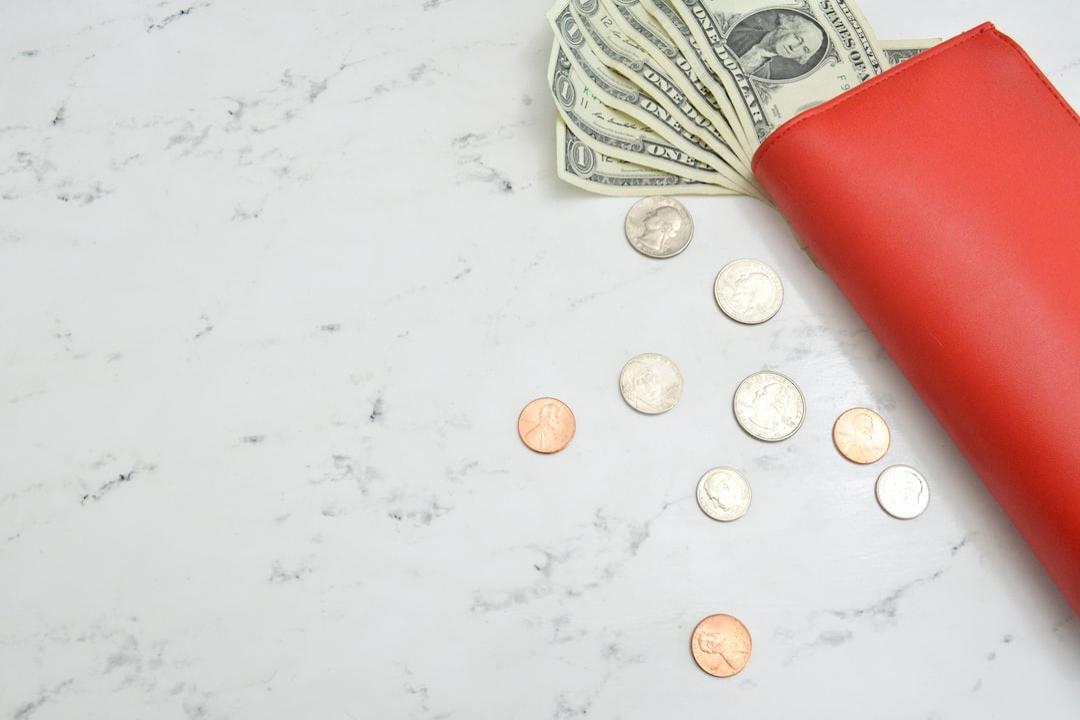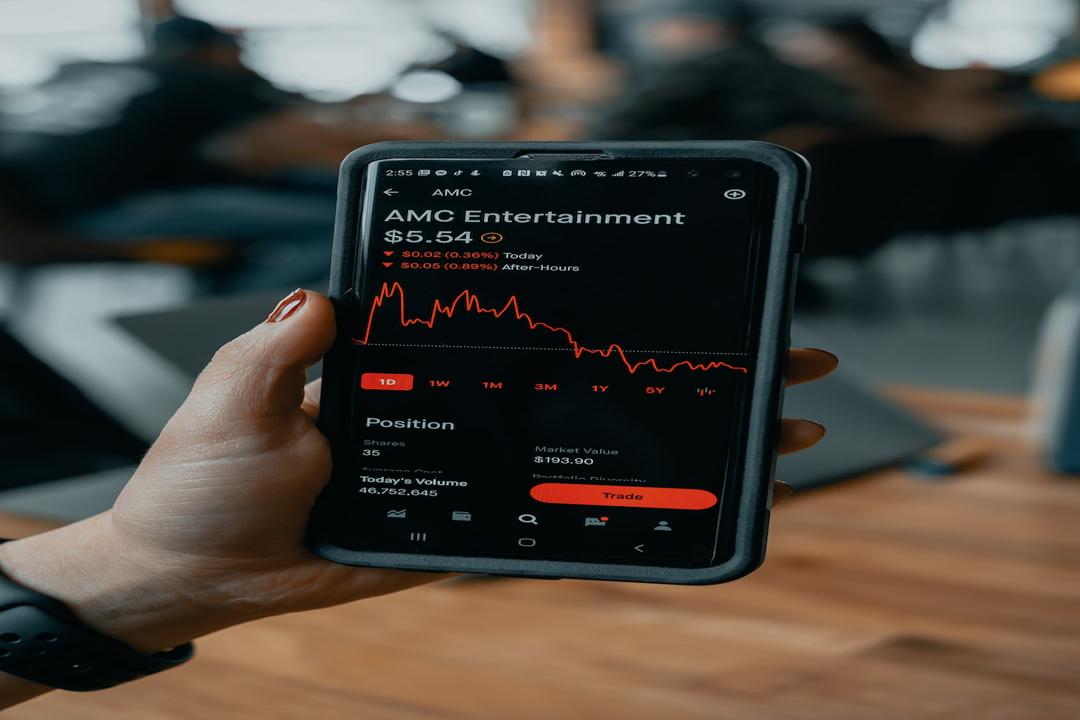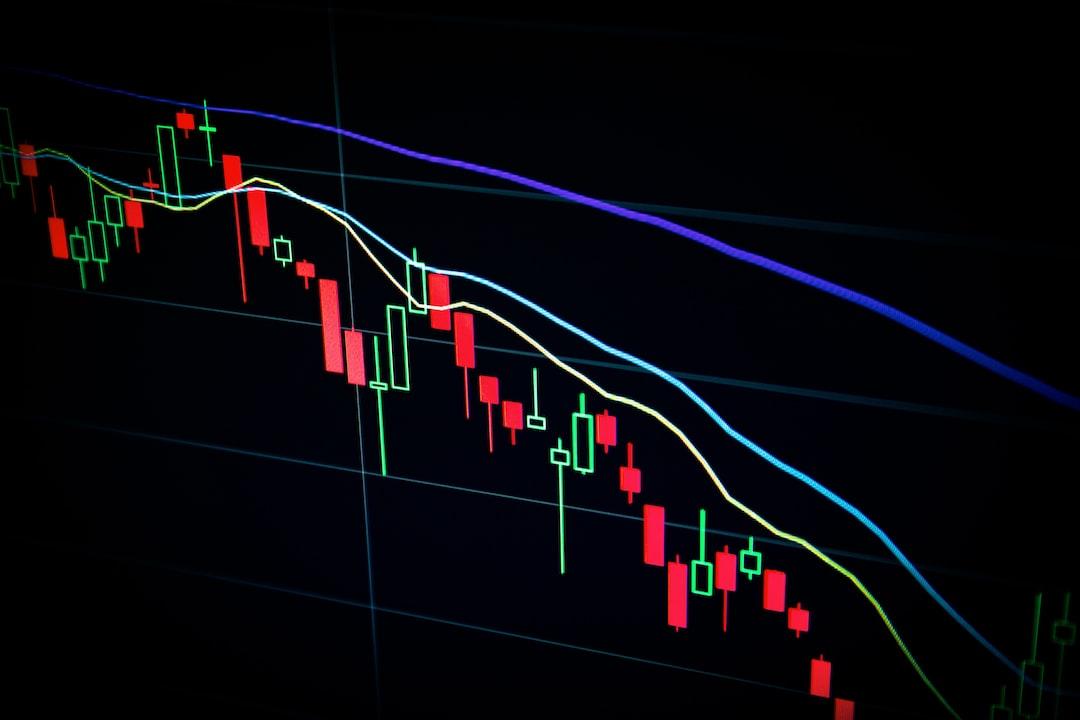
Author:
Arthur Hayes, Co-founder of BitMEX
Translator: Deep Tide TechFlow
Some say:
“The cryptocurrency bull market is over.”
“I need to launch my token now because we are in the downward phase of the bull market.”
“Why hasn’t Bitcoin risen alongside large US tech companies in the Nasdaq 100 index?”

This chart compares the Nasdaq 100 Index (white) with Bitcoin (gold), showing both assets moving in tandem, though Bitcoin stalled earlier this year after reaching historic highs.
Yet others argue:
“The world is shifting from a unipolar order dominated by the US to a multipolar world order including leaders like China, Brazil, Russia, and others.”
“To fund government deficits, savers must endure financial repression, and central banks must print more money.”
“The Third World War has begun, and war leads to inflation.”
Opinions on the current Bitcoin bull market phase and their views on geopolitical and global monetary conditions confirm my viewpoint that we are at a turning point—we are transitioning from one geopolitical and monetary global arrangement to another. While I don’t know which country will ultimately dominate or what the specifics of the trade and financial architecture will be, I have a rough idea of its shape.
I want to step out of the tumultuous capital markets of current cryptocurrency and focus on the broader cyclical trend we are in.
I want to analyze the three major cycles from the Great Depression of the 1930s to the present day. This will primarily focus on the American-led world, as the entire global economy is a derivative of imperial financial policies. Unlike Russia in 1917 and China in 1949, the American-led world did not undergo political revolutions due to two world wars. Most importantly, for this analysis, the American Empire is relatively the best place to hold capital. It has the deepest stock and bond markets and the largest consumer market. Whatever the US does, other countries follow and react, leading to outcomes relative to the flag on your passport. Therefore, understanding and predicting the next major cycle is crucial.
There have been two periods in history: local periods and global periods. During local periods, governments impose financial repression to fund past and present wars. During global periods, financial regulations are relaxed, and global trade is promoted. Local periods are inflationary, while global periods are deflationary. Any macro theorist you focus on will have a similar classification to describe the major cycles of the 20th century and beyond.
The purpose of this history lesson is to make wise investments throughout the cycle. In a typical 80-year lifespan, with the stem cell injections I have, I better get more time; you can expect to experience an average of two major cycles. I categorize our investment choices into three types:
If you believe in the system but not in those who manage it, you invest in stonks.
If you believe in both the system and those who manage it, you invest in government bonds.
If you believe in neither the system nor those who manage it, you invest in gold or other assets that don’t require any residual existence of a state, like Bitcoin. Stocks are a legal fiction enforced by courts that can dispatch armed men to uphold them. Thus, stocks require a powerful state to exist and maintain value over the long term.
During local inflationary periods, I should hold gold and abandon stocks and bonds.
During global deflationary periods, I should hold stocks and abandon gold and bonds.
Government bonds generally do not hold value long term unless I can leverage them at low or no cost indefinitely or regulatory authorities force me to hold them. This is largely because for politicians, printing money to fund their political goals without resorting to unpopular direct taxation is too tempting.
Before describing the cycles of the previous century, I want to describe a few key dates.
On April 5, 1933, US President Franklin D. Roosevelt signed an executive order prohibiting private ownership of gold. He subsequently devalued the dollar’s price of gold from $20 to $35, breaching US commitments under the gold standard.
On December 31, 1974, US President Gerald Ford restored the right of Americans to privately own gold.
In October 1979, Federal Reserve Chairman Paul Volcker changed US monetary policy, targeting credit volume rather than interest rate levels. He then restrained inflation by limiting credit. In the third quarter of 1981, the yield on 10-year US Treasury bonds reached 15%, setting a historic high, while bond prices reached historic lows.
On January 20, 1981, Ronald Reagan was sworn in as US President. He subsequently actively relaxed regulatory oversight of the financial services industry. His other significant subsequent financial regulatory changes included making capital gains tax treatment of stock options more favorable and abolishing the Glass-Steagall Act.
On November 25, 2008, the Federal Reserve began printing money under its Quantitative Easing (QE) program to address the global financial crisis triggered by losses on subprime mortgage loans on financial institution balance sheets.
On January 3, 2009, Satoshi Nakamoto released the Bitcoin blockchain’s genesis block. I believe our Lord and Savior is here, rescuing humanity from state control by creating a digital cryptocurrency that can compete with digital legal tender.
1933-1980: American Pax Rise Cycle
The United States emerged unscathed compared to other countries during the war. Considering the US personnel casualties and property losses, the lethality and material destruction of World War II were lower than the Civil War in the 19th century. While Europe and Asia lay in ruins, US industry rebuilt the world and reaped immense returns.
Despite the smooth progress of the war for the United States, it still had to pay the price of war through financial oppression. Starting in 1933, the US banned gold ownership. By the late 1940s, the Federal Reserve merged with the US Treasury, enabling the government to control the yield curve, allowing it to borrow at rates lower than the market because the Fed printed money to buy bonds. To ensure savers could not escape, bank deposit rates were capped. The government used saved marginal dollars to pay for World War II and the Cold War with the Soviet Union.
If fixed-income securities such as gold and at least pay interest at the inflation rate were banned, what else could savers do to beat inflation? The stock market was the only way out.

From April 1, 1933, to December 30, 1974, the S&P 500 Index (white) versus the Gold Index (gold) Index (100) comparison
Even after President Nixon abolished the gold standard in 1971, gold rose, yet the return on gold did not exceed that of stocks.
But what happened again when capital could freely gamble with institutions and governments?

From December 31, 1974, to October 1, 1979, the S&P 500 Index (white) versus the Gold Index (gold) Index (100) comparison
During this time, gold outperformed stocks. I stopped comparing in October 1979 because Volcker announced the Fed would significantly tighten credit, restoring confidence in the dollar.
1980-2008: Peak of American Rule Global Cycle
With growing confidence that the United States could and would defeat the Soviet Union, political winds changed. It was now time to transition from wartime economies, deregulate finance, and allow markets to flourish.
Under the new petrodollar currency framework, the dollar was supported by profits from oil sales in Middle Eastern oil-producing countries like Saudi Arabia. To maintain the purchasing power of the dollar, it was necessary to raise interest rates to suppress economic activity and thereby curb inflation. This is what Volcker did by allowing interest rates to soar, causing economic downturn.
The early 1980s marked the beginning of the next cycle, during which the United States, as the sole superpower, spread its wings in world trade, and the dollar strengthened due to monetary conservatism. As expected, gold performed poorly compared to stocks.

From October 1, 1979, to November 25, 2008, the S&P 500 Index (white) versus the Gold Index (gold) Index (100) comparison
Apart from bombing some Middle Eastern countries back to the Stone Age, the United States has not faced any wars with comparable or near-comparable armies. Even after wasting over $10 trillion, losing to cave dwellers in Afghanistan, cavemen in Syria, fighting guerrilla insurgents in Iraq, and losing, confidence in the system and government has not been shaken. Following the conquest of glory by Jesus a millennium agoComparison between the United States of America and the Middle Ages from 2008 to the present
Facing another economic collapse due to currency tightening, the United States of America once again defaulted and devalued. This time, the Federal Reserve did not prohibit private ownership of gold, but instead opted to devalue the dollar relative to gold through currency printing and government bond purchases, termed quantitative easing. In both cases, credit based on the dollar expanded rapidly to “rescue” the economy.
Proxy wars between major political factions have erupted once again. A pivotal moment was Russia’s 2008 invasion of Georgia in response to NATO’s intention to include Georgia in the organization. For Russian elites, led by President Putin, thwarting NATO’s advancement and encirclement with nuclear weapons remains a top priority both historically and presently.
Currently, fierce proxy wars have erupted between the West (the United States of America and its affiliates) and Eurasia (Russia, China, Iran) in Ukraine and the Levant (Israel, Jordan, Syria, and Lebanon). Any of these conflicts could escalate into nuclear war between the parties. In preparation for seemingly inevitable war, nations are turning inward to ensure all aspects of their economies are ready to support war efforts.
In this analysis, it means savers will be required to fund national wartime expenditures and will face economic suppression. The banking system will allocate most credit as directed by the state to achieve certain political objectives.
Once again, the United States of America has defaulted on the dollar to prevent a currency tightening depression similar to the Great Depression of 1930. Subsequently, the United States has erected protectionist barriers akin to those from the 1930s to the 1940s. All nation-states act in their own interests, suggesting severe inflation alongside financial oppression.
From November 25, 2008, to the present, the S&P 500 Index (white), gold (gold), and Bitcoin (green) indices are set to 100
This time, as the Federal Reserve devalues the dollar, capital is free to exit this system. The issue is that Bitcoin has emerged as another stateless currency at the onset of this current local cycle. The main distinction between Bitcoin and gold, as Lynn Alden puts it, is that Bitcoin’s ledger is maintained through encrypted blockchains, enabling currency to move at the speed of light. In contrast, gold’s ledger is maintained by nature, with movement speeds comparable to the actual transfer of gold by humans. Compared to fiat currencies that move at the speed of light but can be infinitely printed by governments, Bitcoin has a clear advantage, while gold pales in comparison. This is why Bitcoin has somewhat overshadowed gold to some extent from 2009 to the present.
Bitcoin has outperformed gold significantly, such that the performance difference between gold and stocks cannot be discerned from this chart. Therefore, gold has underperformed stocks by nearly 300%.
End of Quantitative Easing
While I find my background and description of the past 100 years of financial history incredible, this does not eliminate concerns about the current bull market ending. We know we are in an era of inflation, and Bitcoin has done what it should: outperforming stocks and fiat currency devaluation. However, timing is everything. If you bought Bitcoin near recent historical highs, you might feel like a beta version of a cuckold, as you extrapolated past results into an uncertain future. That said, if we believe inflation will continue, wars (whether cold, hot, or proxy) are imminent, what lessons from the past apply to the future?
Governments have long suppressed domestic savers to fund wars and past cycle winners while maintaining system stability. In this modern era of nation-states and large integrated commercial banking systems, the primary means by which governments fund themselves and key industries is by dictating how banks allocate credit.
The problem with quantitative easing policies is that the market channels free money and credit into enterprises that do not produce the actual products needed for wartime economies. The United States of America is a prime example of this phenomenon. Volcker ushered in the era of an omnipotent central bank. Central bankers create bank reserves by purchasing bonds, lowering costs and increasing credit limits.
In the private capital markets, credit allocation is geared towards maximizing shareholder returns. The simplest way to raise stock prices is through buybacks to reduce float. Companies accessing cheap credit are borrowing to buy back stocks. They are not borrowing to increase capacity or improve technology. Improving operations to hope for more revenue is challenging and does not guarantee a boost in stock prices. But mathematically, reducing float increases stock prices. Since 2008, large-cap companies with substantial cheap credit have followed this path.
Another easily achievable goal is to boost profit margins. Therefore, companies are not using stock prices to build new capacity or invest in better technology but are reducing labor costs by moving job positions to China and other low-cost countries. The U.S. manufacturing sector is so fragile that it cannot produce enough ammunition to counter Russia’s fighting in Ukraine. Additionally, China has a significant advantage in manufacturing goods, leading to critical components produced by Chinese companies filling the supply chains of the U.S. Department of Defense. Most of these Chinese companies are state-owned enterprises. Quantitative easing (QE) combined with shareholder-driven capitalism has made the United States military “beholden” to China, their “strategic competitors” (their words, not mine). The irony!
The way the United States of America and the Western collective distribute credit will mirror China, Japan, and Korea. Either banks will be directly instructed by the state to lend to specific industries/companies, or banks will be compelled to purchase government bonds at yields below market, allowing the state to provide subsidies and tax breaks to “appropriate” enterprises. In either case, the return on capital or savings will be lower than nominal growth and inflation. Assuming no capital controls, the only way out is to buy cryptocurrencies or other value stores outside the system.
For those obsessively watching major central bank balance sheet changes and believing that credit growth rates are insufficient to drive cryptocurrency prices higher again, you now must obsessively watch the total credit created by commercial banks. Banks achieve this by lending to non-financial enterprises. Fiscal deficits also generate credit because deficits require borrowing funds in sovereign debt markets, and banks dutifully purchase these debts.
In summary, whereas in past cycles we monitored the scale of central bank balance sheets, in this current cycle, we must monitor fiscal deficits and the total credit of non-financial banks.
Trading strategy
Why am I confident Bitcoin will regain its magic? Why am I confident we are in a new era of localization and nation-state prioritized inflation?
Look at this
Information
:
According to a federal agency’s forecast, the U.S. budget deficit is expected to soar to $19.15 trillion in the 2024 fiscal year, exceeding last year’s $16.95 trillion and setting a record high outside the COVID-19 era, attributed to increased spending, which the agency increased 27% over earlier forecasts.
For those concerned that “Slow” Biden won’t pass more spending to keep the economy running before the election, this is the answer.
The Atlanta Fed predicts actual GDP growth of +2.7% in the third quarter of 2024.
For those worried that America will fall into recession, it is mathematically challenging to experience a recession when the government spends $20 trillion beyond tax revenues, equivalent to 7.3% of GDP in 2023. As background, the U.S. GDP declined by 0.1% in 2008 and 2.5% during the 2009 global financial crisis. Even if a global financial crisis similar to the last one occurs this year, the decline in private economic growth will still not exceed government expenditure. There will be no recession. This does not mean that a large number of ordinary people will not fall into severe financial difficulties, but the United States of America will continue to move forward.
I point this out because I believe fiscal and monetary conditions are loose and will remain so, making holding cryptocurrencies the best hedge. I am convinced today’s situation is similar to the 1930s to the 1970s, meaning, given I can still freely move from fiat to cryptocurrency, I should do so because devaluation caused by expanding and concentrating credit allocation through the banking system is imminent.
Original link
This article is authorized and reproduced from Deep Wave TechFlow
Bitcoin Momentum Slows! Leverage Risks Mount as Market Eyes Key Support at $110,000
On-Chain Analysis Company Glassnode ReportsOn-chain analysis company Glassnode noted in it…
